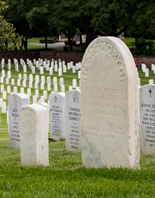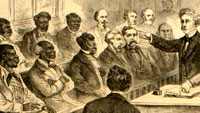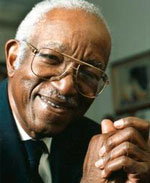For Us the Living

For Us the Living is a resource for teachers that engages high school students through online primary-source based learning modules. Produced for the National Cemetery Administration's Veterans Legacy Program, this site tells stories of men and women buried in Alexandria National Cemetery, and helps students connect these stories to larger themes in American history. Primary sources used include photographs, maps, legislation, diaries, letters, and video interviews with scholars.
The site offers five modules for teachers to choose from, the first of which serves as an introduction to the cemetery's history. The other four cover topics such as: African American soldiers and a Civil War era protest for equal rights, the manhunt for John Wilkes Booth after Lincoln’s assassination, commemoration of Confederates during Reconstruction, and recognition of women for their military service. Most of the modules focus on the cemetery’s early history (founded in 1862) although two modules reach into the post-war era. Each module is presented as a mystery to solve, a question to answer, or a puzzle to unravel. Students must use historical and critical thinking skills to uncover each story. Each module ends with two optional digital activities, a historical inquiry assignment and a service-learning project, related to the module theme.
Teachers should first visit the “Teach” section which allows them to preview each module (including its primary sources, questions and activities), learn how to get started, and see how the site’s modules connect with curriculum standards. In order to access the modules for classroom use, teachers do have to create their own account, but the sign up process is fast, easy, and best of all, free! The account allows teachers to set up multiple classes, choose specific module(s) for each class, assign due dates, and view student submissions.



